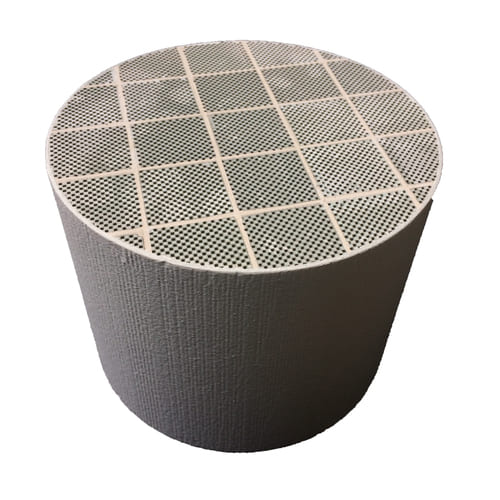Have you ever wondered how industries manage to reduce harmful emissions and improve air quality? Or how they ensure that exhaust gases are purified before being released into the atmosphere? The answer often lies in a crucial component known as ceramic honeycomb. But what exactly is ceramic honeycomb, and why is it so important?
Ceramic honeycomb is a structure made from ceramic materials, primarily used in catalytic converters, diesel particulate filters (DPFs), and other emission control devices. It serves as a substrate or support for catalysts that help convert harmful pollutants in exhaust gases into less harmful substances. The honeycomb structure is designed to maximize surface area while minimizing volume, allowing for efficient gas flow and effective catalysis.

Why is Ceramic Honeycomb Important?
Ceramic honeycomb plays a vital role in reducing vehicular and industrial emissions. The honeycomb structure allows for a large surface area within a small volume, which is essential for effective catalytic reactions. This design ensures that exhaust gases come into contact with the catalyst-coated surfaces, facilitating the conversion of harmful pollutants like carbon monoxide (CO), hydrocarbons (HC), and nitrogen oxides (NOx) into less harmful substances such as carbon dioxide (CO2) and water (H2O).

How Does Ceramic Honeycomb Work?
The effectiveness of ceramic honeycomb lies in its structure and material properties. The honeycomb design provides numerous small channels through which exhaust gases can flow. These channels are coated with a catalyst material, typically platinum, palladium, or rhodium. As the exhaust gases pass through the channels, they react with the catalyst, leading to the conversion of pollutants into less harmful substances.
The ceramic material used in the honeycomb is typically cordierite or silicon carbide, both of which can withstand high temperatures and thermal shocks. This durability is crucial for maintaining the integrity of the honeycomb structure under the extreme conditions found in exhaust systems.

Applications of Ceramic Honeycomb
Ceramic honeycomb is widely used in various applications, including:
- Automotive Catalytic Converters: Used to reduce harmful emissions from internal combustion engines.
- Diesel Particulate Filters (DPFs): Capture and remove particulate matter from diesel engine exhaust.
- Gasoline Particulate Filters (GPFs): Similar to DPFs but used in gasoline engines.
- Industrial Emission Control: Used in factories and power plants to reduce industrial emissions.
- Air Purification: Used in air purifiers to remove volatile organic compounds (VOCs) and other pollutants.
Benefits of Ceramic Honeycomb
The benefits of ceramic honeycomb include:
- High Surface Area: Maximizes the contact area for catalytic reactions.
- Durability: Can withstand high temperatures and thermal shocks.
- Efficiency: Facilitates the conversion of harmful pollutants into less harmful substances.
- Versatility: Used in various applications, from automotive to industrial emission control.

Conclusion
Ceramic honeycomb is a critical component in emission control technologies, helping to reduce harmful pollutants and improve air quality. Its unique structure and material properties make it an efficient and durable solution for various applications. Understanding the importance and functionality of ceramic honeycomb can help industries and consumers make informed decisions about emission control and environmental protection.


